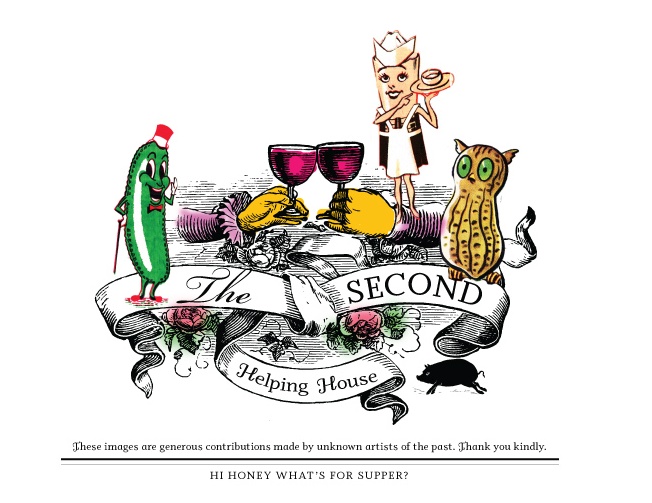
When I go thrifting, I like to go alone and with no other mission other than having a few hours mingling with the stuff. The stuff either speaks to me or it doesn't, but all stuff has a voice, you just have to look and listen. The Savory roaster and I fell for one another with just one touch. Just look at the smooth shoulders, the Venus of roasters, this roaster is a grand dame and I love her. The only trouble was I did not know much about her, so a-researching I went and this is what I found. She was made by Republic metalware company of Buffalo New York around 1908. Here is an ad in Home furnishing review of the time.
Home Furnishing Review: “Republic Metalware Co. Every buyer of house furnishing goods knows that the Republic Metalware Company of Buffalo NY manufactures the Savory Roaster. The sale of the roaster has been so enormous during the past year that there is not a housewife from Maine to California who does not know of these roasters. The Republic Metalware Company does not stop with the make of Savory Roasters however, but manufactures also the famous Hustler Ash Sifters. This is a rotary sifter that sifts out the coal clean without dust or dirt. The ashes are put in a hopper and the boy or woman of the house turns the handle which revolves a heavy galvanized sifter dropping the ashes into the barrel and throwing the unburned coal into a waiting coal skuttle. It is lots of fun to work one of these ash sifters and they will more than pay for themselves within a short time. The Republic Metalware Company also makes galvanized ash cans with broad tripple corrugated reinforced strips securely riveted on with large malleable drop handles. These are the best and strongest ash cans made and the entire equipment is one that should be known to every house furnishing dealer in the trade. Full particulars regarding this and the many other metal ware specialties manufactured by the Republic Metalware Company may be obtained by writing to this firm.
Well it seems that royalty money was at the core of a dispute over the patient rights to the Savory roaster. The inventor of the Savory roaster, was a man named Mathy. He hammered out the orginal roasters in his home and sold them with the name “Savory” stamped into them. He later entered an agreement with the Republic Metalware company for the manufacture of the roasters. Mathy agreed to let Republic manufacture the pans in return for royalties but held on to the patent. Something went wrong between the two parties and Mathy went before the court of appeals, his contention was that the patent and “Savory ” trademark was still his and he had not abandoned or forfeited his rights to the contract. Republic Metalware tried to prove other wise. As best I can tell the judges ruled in favor of Mathy. Read it for yourself and correct me if I have re-capped anything incorrectly. Below is the drawing from the patent office. Click on the image or name to view and read the source. Including his claims for the roaster.
JOSEPH MATHY

One final note: a Savory roaster testimonial.
Re: What is the most unusual cooking utensil/item you own?
I have about 10 or more Savory Roasters. My mother had one that was her grandmother's. When I left home, I was lost because she WOULDN'T GIVE IT TO ME!!! When my daughter was 4 and my son was an infant, while traveling through central Missouri on our way back to Texas from Illinois, I found 2 roasters in the same town. They traveled back to Houston under my children's feet. It took me another 12 years to find another. The best are the enamel glazed roasters that come in white, blues, red, yellow, green. They come in 3 sizes–regular large, junior and a tiny one. When my children get married or go off on their own, they'll be given their own roasters so they'll never say anything bad about me–at least regarding my hoarding of the Savory Roaster. I cannot dry out a turkey or chicken no matter what I do. They're wonderful. I don't mind sharing since I'm sure I have plenty in my own stock!
To visit this site go to- http://forums.cooking.com/showthread.php?p=42052




























